Baltimore Inner Harbor—mingle with history, enjoy the spirit of today
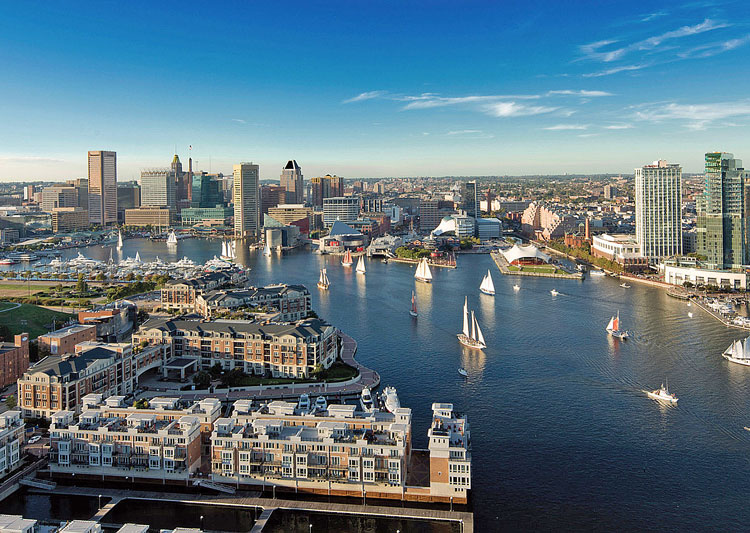
Estimated reading time: 15 minutes – SBFL 11* – PLANNED & VISITED – Baltimore is not the Maryland version of Georgetown in Washington, DC, nor of Williamsburg in Virginia, nor did the locals ever want it to be. Because of being a major port on the eastern seaboard, some say Baltimore was a sailor’s town throughout its history, up to the early 20th century—and Baltimore has a very long maritime history. Fells Point, located in a deeper section of Baltimore’s Inner Harbor, was one of the earliest settlements, and was where the Clipper Ships were made. There are only a few places in the US that had that distinction. It was a working waterfront, with tugboats coming and going, major freighters stopped right at the end of the large public space, and right next to it, very small houses and a variety of neighborhoods. They had bars with completely different atmospheres catering to the neighborhood area, as well as the working waterfront. In the early 20th century, there were bars on the waterfront that opened from 6 in the morning until midnight. They had a free lunch on the counter and a nickel beer. At one point, there were 54 bars just in the Fells Point area of the port. That was, of course, aside from the neighborhood bars, which the community referred to as the “good bars,” such as Zeppi’s and Peat’s. In the 1940’s, the neighborhood used to be referred to as the Polish Utopiapolis, due to its well-established Polish immigrant community. (More on that later.)
Now, I invite you to look at the “List of waterways forming and crossings of the Atlantic Intracoastal Waterway” (ICW). Can you locate the seemingly lonely 4 lines under Maryland in a list that has over 400 entries? The list covers the entire Atlantic seaboard from Maine to Florida. Today, the current Atlantic ICW route runs for most of the length of the Eastern Seaboard. If you are not familiar with that part of the country, those 4 lines, in reality, make an incredibly understated reference to an undeniable true giant, the Chesapeake Bay. The Bay is the largest estuary in the United States and Baltimore is on its northern tip.
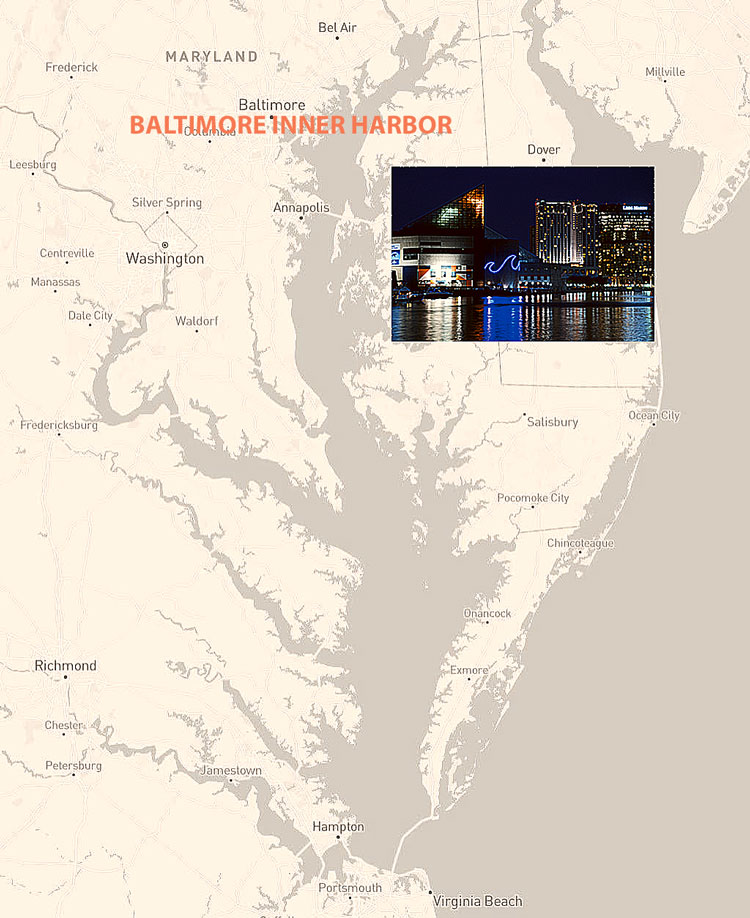
If you are sailing to or from Florida, in-between Maine and Virginia, there is an unexpected but well-established waterway that you should look for. It is the Chesapeake and Delaware (C&D) Canal, connecting the Delaware River to the Chesapeake Bay. The C&D Canal system provides a continuous sea-level channel connecting the Port of Baltimore to the ports of Wilmington, Delaware; Philadelphia; and the northern trade routes. Approximately 40 percent of the shipping traffic in and out of the Port of Baltimore passes through the C&D Canal. The Army Corps of Engineers Philadelphia District maintains the canal and the bridges that cross it.
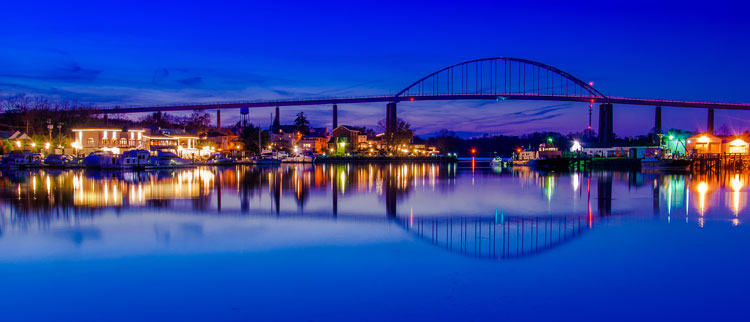
So the western end of the C&D Canal calmly leads you to the Elk River. It is a tidal tributary of the Chesapeake Bay on the Eastern Shore of Maryland and on the northern edge of the Delmarva Peninsula. That is the northernmost tip of the Chesapeake Bay region, where the Susquehanna River also says hello. Look for the Patapsco River. It empties into the Bay while it welcomes you to explore in the Baltimore direction. The river’s tidal portion forms the harbor for the city of Baltimore. Captain John Smith was the first European to explore the river, noting it on his 1612 map as the Bolus River. The Patapsco River is referred to as The River of History and what a history! It is regarded as the center of Maryland’s Industrial Revolution beginning in the 1770s, having abundant milling and manufacturing operations along the river throughout the eighteenth and nineteenth centuries. The Port of Baltimore was established in 1706 and is one of America’s busiest deep-water ports. In 1990, the main shipping channel from Cape Henry to Fort McHenry was dredged to a depth of 15 m (50 ft), allowing deeper-draft vessels entry to the port. The improvements also included deepening and widening portions of Piers #3 and #4.
Today Baltimore Inner Harbor boasts several world-class marinas and one top-rated service and repair yard for boats and yachts.
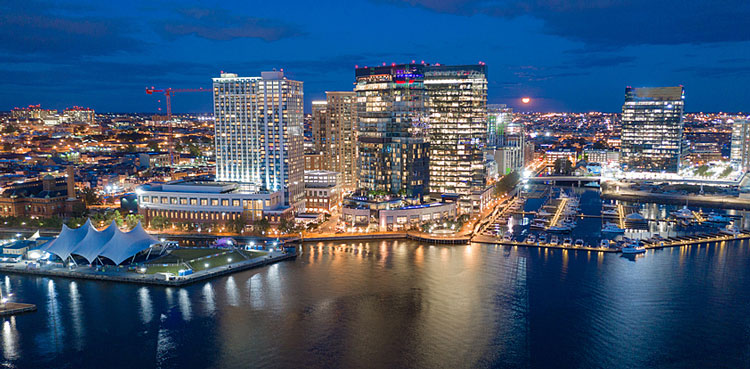
As our avid readers know, my wife and I are comparing the then and now of life on the water and land on the Atlantic ICW, using observations made by Dorothea and Stuart E. Jones in their 1958 National Geographic essay, “Slow Boat to Florida,” and the 1973 book published by National Geographic, cited above, America’s Inland Waterway by Allan C. Fisher, Jr.
The essence of our Slow Boat to Florida (SBFL*) series here is not to seek new lands and exotic cultures. Rather, it is to cover our journey of discovery (hence the title of our blog, Trips Of Discovery) that comes from seeing what was always just over the horizon with a new eye.
The Jones’ covered the Baltimore of 1958 with a single one-page black and white photo of a great ship with a couple of tugboats around it. It has a caption of “Dawn over Baltimore Harbor: Tugboats help a freighter to piers. The Nation’s second-largest port in foreign-trade tonnage lies 150 water miles from the Atlantic… In 1956 the Maryland port handled an export-import volume of nearly 27 million tons, a figure exceeded only by New York; ocean-going vessels arriving in Baltimore reached an all-time high of 5,735.“
Baltimore, the nation’s 2nd largest port in 1958, today in 2021 is the 14th in the nation. New York has dropped down from 1st place to 3rd place. Today, the distinction of the number 1 port in the Nation goes to the Port of Los Angeles in California.
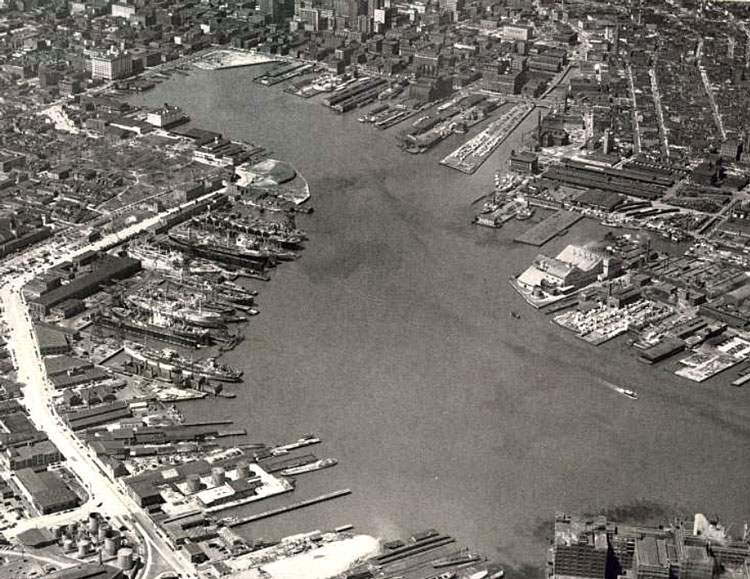
As for Fisher, although he was an Annapolis resident, he did not cover Baltimore at all in his book. Frankly, I am not surprised at the lack of coverage. If you can imagine the 1950’s industrial nature of Baltimore Inner Harbor, it is easy to conclude that it was not the most exciting destination for pleasure boaters. Just look at this photo of the Baltimore Inner Harbour of 1958 and then the same area in 2017.
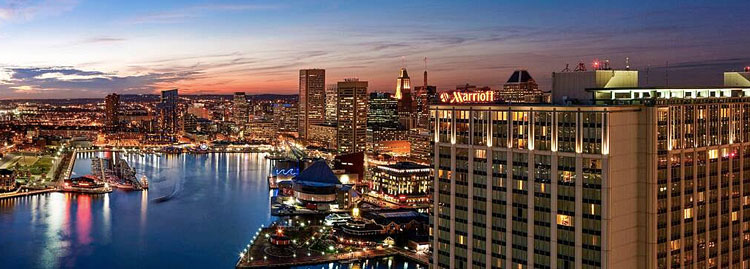
Along with its numerous cargo terminals, Baltimore also has a passenger cruise terminal which offers year-round trips on several lines. These include Royal Caribbean’s Grandeur of the Seas and Carnival’s Pride. American Cruise Lines also makes trips around the Chesapeake Bay region and along the East Coast. The German-based Phoenix Reisen and Aida Cruises make Baltimore a port of call during their trips as well.
Thanks to the now somewhat more relaxed Covid-19 restrictions, we planned and visited the Baltimore Inner Harbor, the 21st century Baltimore waterfront that I bet will surprise you. So, if you stop over, plan to stay a few days and enjoy the environment and the city. All you have to do is know what to look for and where. I would say prepare to be surprised and delighted.
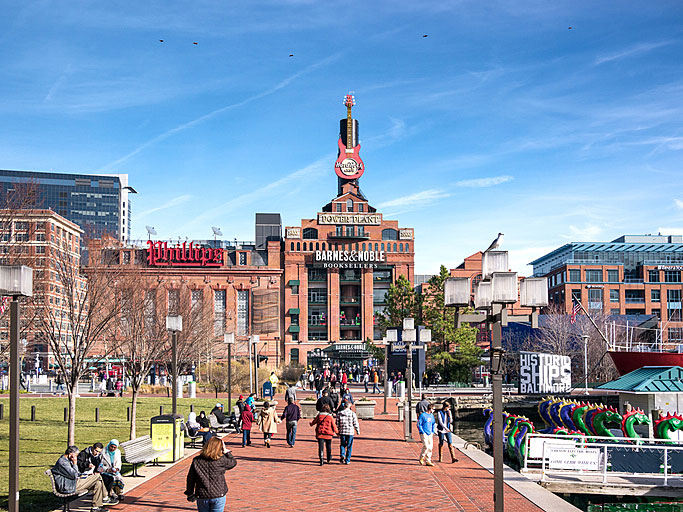
Today’s Baltimore harbor, along with its Inner Harbor neighbourhoods, has gone through major transformation and the work is still in progress. Gone is the famous Bethlehem Steel Sparrows Point steel mill—at one time, the largest steel mill in the world. If it was 1958, you would have spotted it on the right bank of the Patapsco River while you were on the way to the Inner Harbor. Also, at that time, if you had asked Baltimore residents if the Bethlehem Steel plant would still be there in 2021, 60 plus years later, they would have said yes, without hesitation. After all, it was the big kahuna of its time. Today as a part of changing times, you will no longer see it there—as if it went puff and disappeared. Yes, that enormous steel mill is totally gone. In its place, you can’t miss the huge new white warehouse complex with a light blue stripe along its roof lines, complete with the smiling logo of the Amazon.com logistics and fulfillment center. That’s exactly where the Sparrows Point steel mill used to be located.
Back in 1958, you would see the Seven-Foot Knoll Lighthouse on the way to Baltimore Inner Harbor. The Seven Foot Knoll Light was built in 1855 and was the oldest screw-pile lighthouse in Maryland. It was located atop Seven Foot Knoll in the Chesapeake Bay until it was replaced by a modern navigational aid. The good news is that today you can still see and even visit it on the shore of the Harbor East neighborhood of the Inner Harbor as a museum exhibit. In 1988, the lighthouse was removed from Seven Foot Knoll and placed ashore in Baltimore’s Inner Harbor, where it was donated to the city and is now listed on the National Register of Historic Places.
The transformation of the Inner Harbor and its surroundings is still in progress, but it has left behind its sailor’s town image of the early 20th century. Today’s Inner Harbor is home to all sizes and types of pleasure boats, up to 200-foot superyachts that cruise the upper Chesapeake Bay or simply winter there rather than going all the way down from New York City to Florida. But at the same time, it is a home for a large modern port along with all its facilities.
O say can you see?
While continuing inward towards the Inner Harbor, at one point the waterway will split. Stay on the starboard side (right) closer to the shore. A few miles up make sure to look at your port side (left). You will notice an interesting green spot on the hill, a small peninsula. It is the historic Fort McHenry. It is also the point at which you have to slow down to a mandatory speed of 6 knots. Now, if you look closely, you could almost feel that the Fort is standing there quietly saluting the history of the United States of America. It became the star of the Battle of Baltimore, fought in September 1814, that defined the moment in the War of 1812 between the British and its former colony, the United States of America.
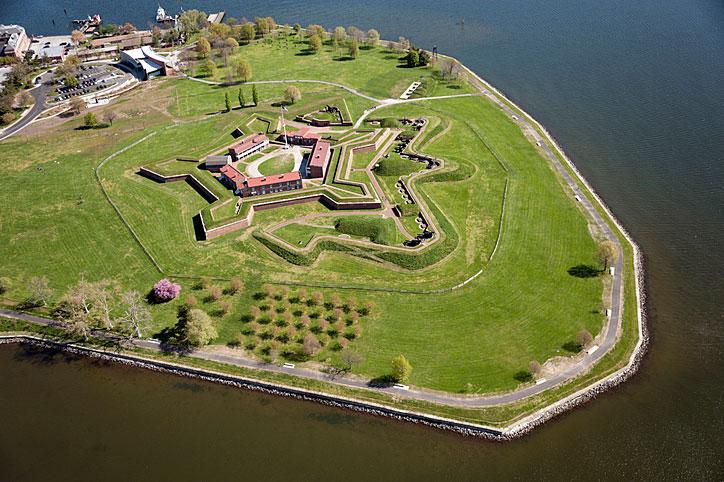
It took place after the devastating victory of British forces at Bladensburg and after they burned the American Capitol, Washington, D.C. The epic events of the Battle of Baltimore inspired Francis Scott Key to write the words that would eventually become “The Star-Spangled Banner,” the National Anthem of the U.S. Today, the National Anthem is sung in its shorter version during official as well as popular events.
Near the Inner Harbor, there is the Baltimore Yacht Basin. It is located in the Port Covington neighborhood that is in the early stages of development, near the Cruise Maryland passenger ship terminal that offers year round cruising. You could say that the location of the marina is the ‘front porch’ to the city. One of its best-kept secrets is located in the back of the marina: Nick’s Fish House, which is mostly enjoyed by locals in the know. The restaurant is home to fresh seafood, delicious land-fare, and freshly made cocktails. Trust me, either stay there or just go there to eat, you will not be disappointed.
Keep going to the end of Inner Harbor on Marina Row
As you go further into the Inner Harbor, after passing the large port cranes, soon you will start noticing a number of good-looking marinas on the right. I call it the Gilded Marina Row. The initial ones are located in the Canton Park area. Next comes the Fells Point area marinas and the Harbor East neighborhoods. Most are what I call 5-star type, world class marinas. You would not be disappointed.
So go towards the end of the Inner Harbor, where you will find a great Visitor’s Center and answers to all of your Baltimore-related questions. Let’s keep going across, further up, catty corner to Ft. McHenry. You will notice a number of great marinas, one after another, really. Somehow, if I missed mentioning a marina here, it is not intentional. Most are world class marinas and great places to dock your boat. It starts with a small marina named Canton Cove Marina, followed by the Lighthouse Point Marina, a sizable one. Then next comes the Anchorage Marina, followed by Handerson’s Wharf Marina, and later you will reach the Harbor East Marina under the Legg Mason building in Harbor East. The neighborhood is one of the most prestigious in the city. You will find yourself in a world-class marina experience with brand-new floating docks, wider slips and finger piers, lpe wood decking, enhanced shore power, and reimagined amenities throughout the property.
Fells Point, Warner Brothers Studios, and more
Here’s a tidbit for you: if you dock at one of the marinas located at or near Fells Point, think of the famed Warner Brothers of Warner Brothers Studios. They were members of the Polish-American community in Fells Point. The company’s name originated from the founding Warner brothers, who were born as Wonskolaser or Wonsal before Anglicization of their names as Harry, Albert, Sam, and Jack Warner. As in many other immigrant families, some of the children gradually acquired anglicized versions of their Yiddish-sounding names: Szmuel Wonsal became Samuel Warner, nicknamed Sam. Among many others, there is Carroll Rosenbloom, a businessman who was owner of the Baltimore Colts and the Los Angeles Rams. And let’s not forget Barbara Mikulski, who was the senior United States Senator from Maryland, a former United States Representative, the longest-serving female senator, and the longest-serving woman in the history of the U.S. Congress.
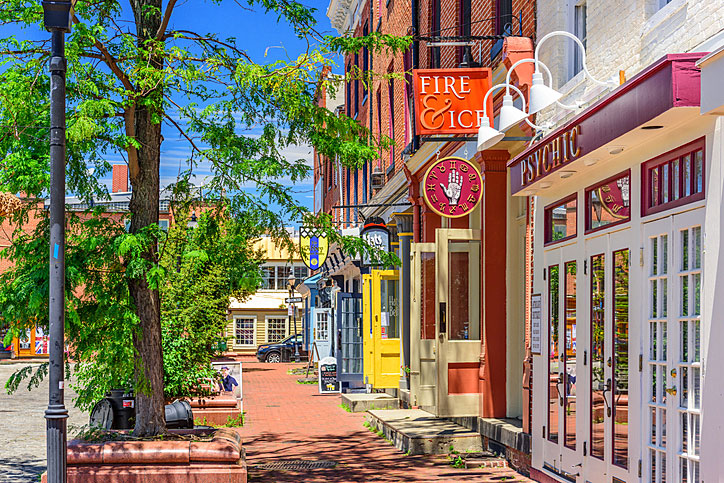
Today in Fells Point, perhaps you may catch a glimpse of Michael Fred Phelps, a resident of the neighborhood, a famed American former competitive swimmer, and the most successful and most decorated Olympian of all time with a total of 28 medals. At City Pier Broadway on the waterfront, poised in the storied 1914 property on Baltimore’s historic Recreation Pier, Sagamore Pendry Baltimore, a boutique hotel, is waiting to pamper you, be it for staying or dining only. The Recreation Pier, as it was known, originally served as a landing point for thousands of new immigrants who were processed across the Patapsco River at the Locust Point immigration station.
If you chose a marina located in Fells Point or Harbor East, you may quickly learn that there is a water taxi service that can take you around in the Inner Harbor to 17 stops, leading you to many attractions on the shores, including the National Aquarium and Fort McHenry.
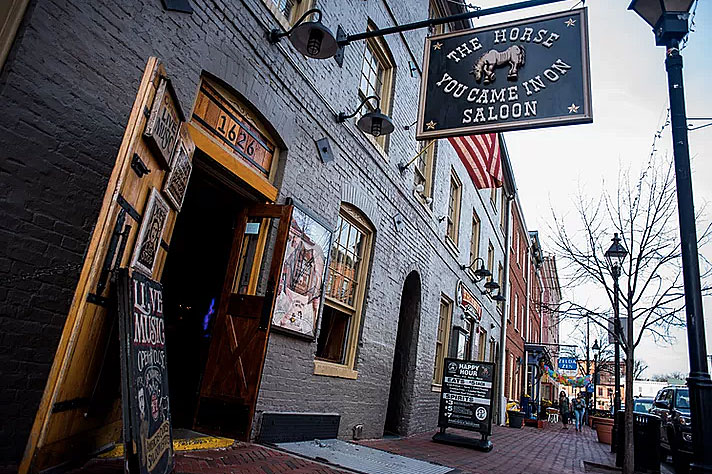
Fells Point, one of the oldest neighborhoods in Baltimore, was once a bustling shipbuilding port. Today, Fells Point’s appearance has remained largely unchanged since its founding—picturesque stone streets, waterfront restaurants, and cozy boutiques. Travel back in time with a stop at the oldest-standing residence in Baltimore City, the Robert Long House, which is open for tours by reservation. While you’re in the area, learn about Fells Point’s history as home to the first African American-owned shipyard in the country at the Frederick Douglass-Isaac Myers Maritime Park Museum. Then stop for a drink at America’s oldest continually-operated saloon, The Horse You Came In On Saloon, which has been open since 1775. Another interesting factoid, it was rumored to have been Edgar Allan Poe’s last stop before his mysterious death.
Once upon a midnight dreary, while I pondered, weak and weary
Speaking of Edgar Allan Poe, if you want to go inland, you may want to visit the first and second burial spots of this very famous 19th century resident of Baltimore. He is best known for his poetry and short stories, particularly his tales of mystery and the macabre. One of his famous poems, of course, is Quoth the Raven “Nevermore,” a.k.a Raven.
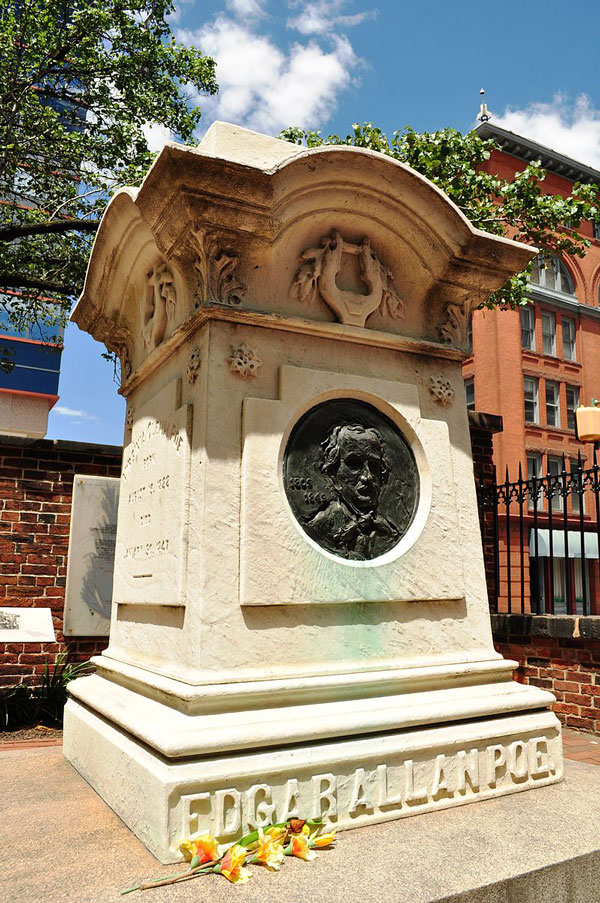
He was buried on the grounds of Westminster Hall and Burying Ground, now part of the University of Maryland School of Law in Baltimore. Even after his death, he created controversy and mystery. After his initial burial, on November 17, 1875, Poe was reburied with a new monument.
Across Fells Point on your starboard (right side), you may notice the Under Armour Global Headquarters. Near it you may catch a glimpse of the iconic logo of Domino Sugar on top of a brown factory. If you are really lucky, you may even be able to smell the sweet aroma of raw sugar. The Domino Sugar factory has been operating in Baltimore’s Inner Harbor for nearly 100 years. On the same shores, you will start seeing many brand-new, high-end residential buildings.
1958 version of Inner Harbor transformed in 21st century
Today, Inner Harbor icons like Western Electric, Allied Chemical, and Procter & Gamble are long gone. They have now been replaced with service sector giants like Legg Mason, Morgan Stanley, and a number of great hotels. In other words, you are not looking at Dorothea and Stuart E. Jones’s 1958 version of Baltimore Inner Harbor.
Now, if you are at the Harbor East area, look at your right, towards the end of the Inner Harbor and across, you will notice another large marina. That is the Baltimore Inner Harbor Marina. The marina is equipped and welcomes all sizes of pleasure boats, including superyachts. You may want to go over there with the Water Taxi that you can catch on Pier 5. Prepare to leave your traditional perceptions of museums behind and visit the American Visionary Art Museum nearby. It is a must-see Baltimore landmark dedicated to fresh thought, humor, and creative intuition. Featuring the work of self-taught artists, including farmers, mathematicians, prison inmates, and people with mental illness, it challenges the notions of what it means to be an artist. Then walk over to the nearby Federal Hill neighborhood. You will see sweeping views of the Inner Harbor. Historic Federal Hill is characterized by brick row houses and locally-owned shops and restaurants. City buses will take you to nearby Locust Point, where Fort McHenry beckons to history buffs. Another option is, again, letting the Water Taxi take you there.
Obviously, there is far more to Baltimore than the Inner Harbor. As a boater, if you choose to go inland from the shore, you will also find a large number of spots that will provide endless opportunities to explore and enjoy yourself. Just stop by the Visitor Center in the Inner Harbor to get the scoop.
Well, that is it for now. Stay well. I hope to say hello to you if you spot my boat, Life’s AOK, in one of the locations that I’m hoping to visit in 2021, that is if Coronavirus permits us.
I bid you Fair Winds and Following Seas.
3 things I learned
- On October 15, 2016, the Port of Baltimore was the location of the commissioning ceremony for the USS Zumwalt, the U.S. Navy’s first stealth destroyer. The ceremony took place during Maryland’s inaugural Fleet Week celebrations. Believe it or not, I was there to see it.
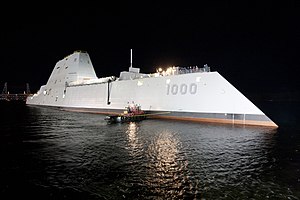
- The history of Seven Foot Knoll Lighthouse is a very interesting one. A snapshot of a life in the lighthouse reads: “Seven Foot Knoll was not always a lonely outpost for lightkeepers, as over its 133 years of manned operation a few families made their home there. In 1936, Eva Marie Bowling, daughter of keeper James T. Bowling who served as head keeper from 1874 to 1879, recalled her early life at Seven Foot Knoll Station for a local newspaper. Eva Marie was born at the lighthouse on June 23, 1875 and was nicknamed Knollie after her birthplace. ‘There are five large rooms,’ she related, ‘and we had a piano and big bookcase with no end of books which occupied our time during the long winter evenings. Mother had been a school teacher and she taught us, because we had no way to get to and from the shore for school.’ Ms. Bowling went on to note some of the many chores and duties at the station that contributed to her family’s survival: ‘We had nets and lines and an abundance of seafood, which we traded with the farmers for vegetables.’ A hog pen and chicken yard were located on the platform below the living area to further supplement the family’s diet. Strong storms occasionally swept away this makeshift barnyard, but the livestock were always rescued beforehand and temporarily housed with the family. One day a storm delayed Keeper Bowling’s return to the lighthouse, forcing his wife to tend the light and ring the fog bell all night.”
- The Patapsco River is referred to as The River of History, as it is regarded as the center of Maryland’s Industrial Revolution beginning in the 1770s. Milling and manufacturing operations abounded along the river throughout the eighteenth and nineteenth centuries, generally relying on water power generated by multiple small dams.
7 things I recommend
- It is the Covid-19 year. Stay safe, above and beyond anything else your health and well-being comes first. With your healthy self, trust that in time the rest will fall in place as nicely as you wished for. Before visiting the Baltimore Inner Harbor, check the Visit Baltimore site for the latest information.
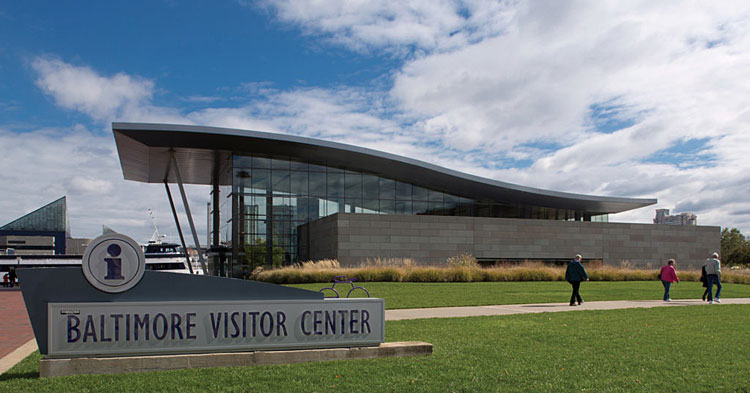
- While planning to visit Baltimore Inner Harbor, study the Baltimore Visitor Center. The center is located at the end of the Inner Harbor. When you are there, consider visiting it as the first order of the day.
- If you have children on board, check out these unique spots on the Baltimore Inner Harbor shores. They are Port Discovery Children’s Museum, American Visionary Art Museum, and the Maryland Science Center.
- Don’t miss out on the National Aquarium.
- If you have time to go into town, further up from the Inner Harbor don’t miss The Walters Art Museum.
- The History of the Star-Spangled Banner for Kids: Francis Scott Key and Fort McHenry. (Also see this.)
- Check out the virtual tours of Fort McHenry.
If you do not want to leave the Inner Harbor area, you may want to do a virtual tour of the Edgar Allan Poe House.
How easy?

Where can you tie up your boat?
- In addition to the world-class marinas that I mentioned in my article above, Baltimore City also offers convenient docking spots in the Inner Harbor.
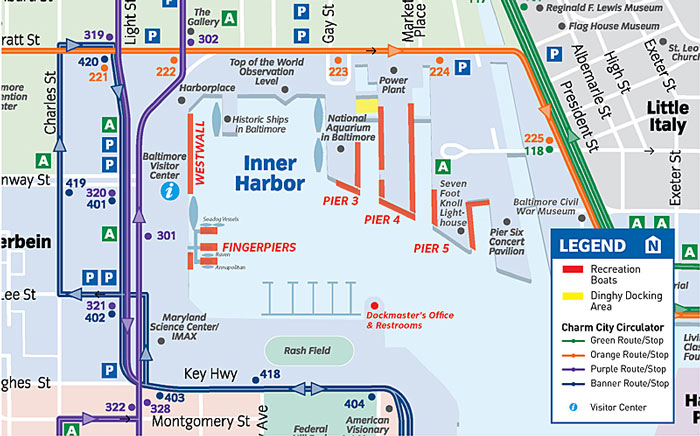
- Inner Harbor piers that you can dock at are: Fingerpiers, Pier 3, and both sides of Piers 4 and 5. If you are an overnighter and if there is a concert at Pier 6, you may want to dock at Pier 6, facing the Pier 5 side, to hear the concert, or perhaps not. However, there will be a nominal charge for all pier dockings. Also, there is a dingy docking area behind the National Aquarium (see above map). For more information, call the Baltimore Dock Master’s Office, (410) 396-3174.
- You can also check out the Waterway Guide for marinas at and near Fells Point in the Baltimore Inner Harbor.
*SBFL stands for Slow Boat to Florida. It is a series of my blog posts, which started with a posting that had the same title. Each numbered heading has two parts. The first is “Planned,” and when we visit the planned location, a “Visited” label appears at the beginning, next to SBFL. The essence of this series is not to seek new lands and exotic cultures. Rather, it is to cover our journey of discovery (hence the title of our blog Trips Of Discovery) that has to do with seeing with a new eye the coastal locations of the Atlantic Intracoastal Waterway (ICW) where present-day America started to flourish. The SBFL series represents part travel, part current and historical anthropological highlights of selected locations and coastal life. We’re comparing then and now, based on observations made by Dorothea and Stuart E. Jones in their 1958 National Geographic article titled, “Slow Boat to Florida” and a 1973 book published by National Geographic, titled America’s Inland Waterway (ICW) by Allan C. Fisher, Jr. We also take a brief look at the history of the locations that I am writing about. Finally, we bundle it up with our observations during our actual visits to the locations and our interviews with local residents. Think of it as a modest time capsule of past and present. My wife and I hope that you, too, can visit the locations that we cover, whether with your boat or by car. However, if that is not in your bucket list to do, enjoy reading our plans and actual visits as armchair travelers anyway. Also, we would love to hear from you on any current or past insights about the locations that I am visiting. Drop me a note, will you?

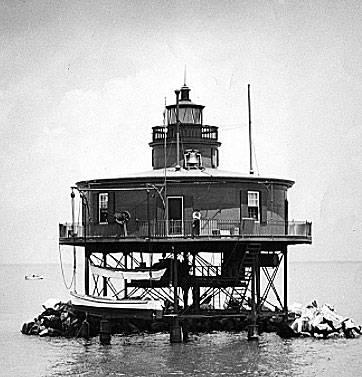
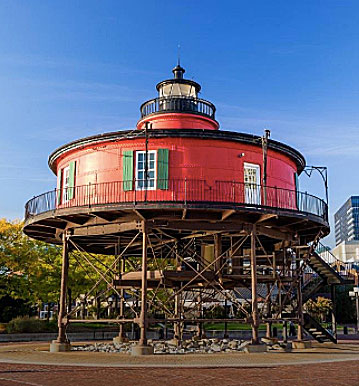

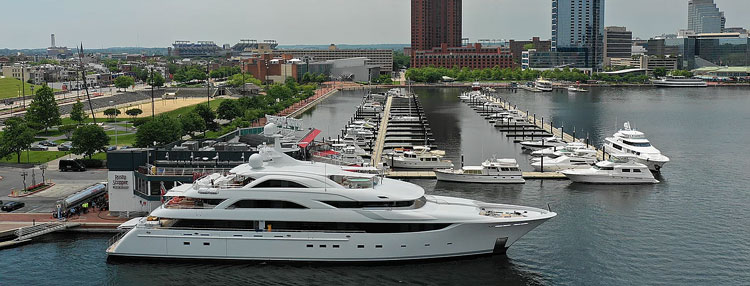
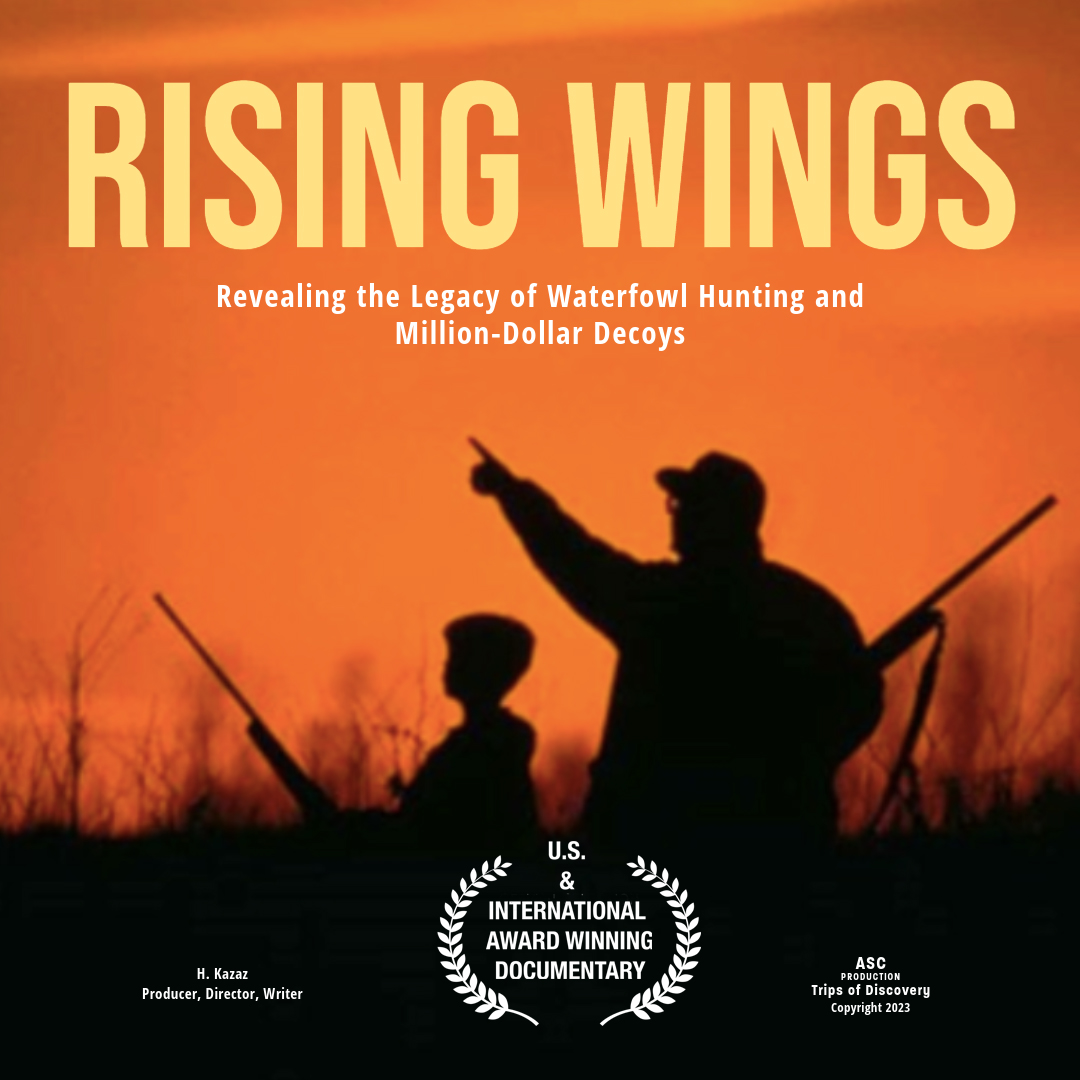
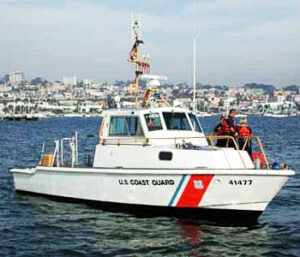



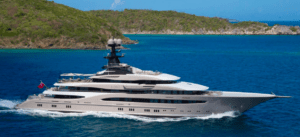





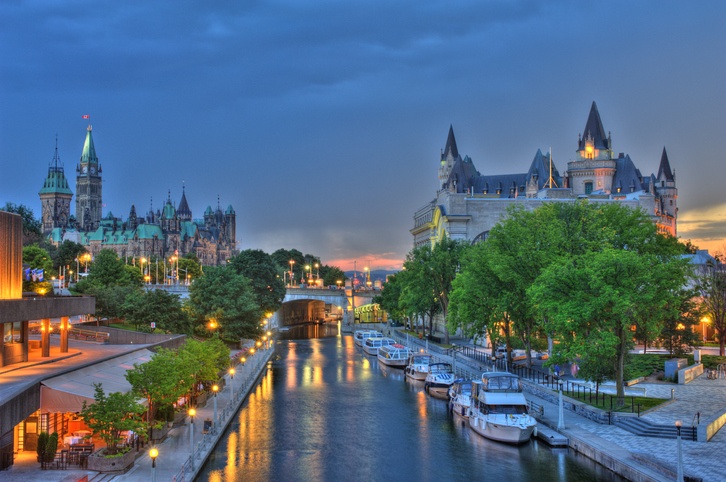
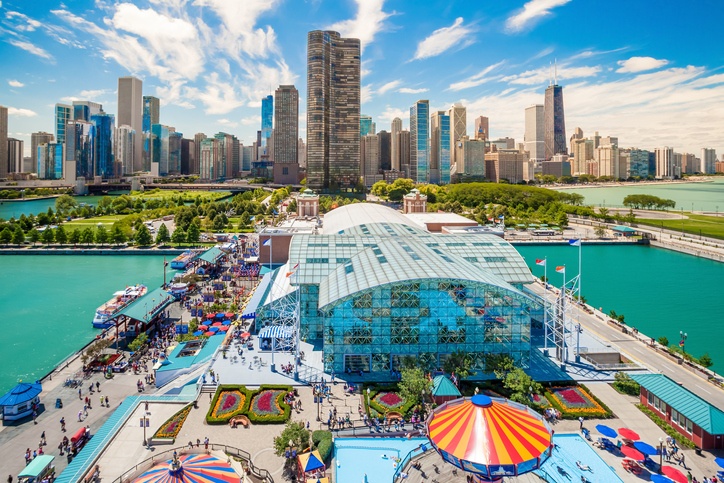
1 Response
[…] Waterway (ICW) down to the south. We started our journey in Maryland. We visited Baltimore, then near the Chesapeake Bay Bridge, we turned east into the Chester River and visited […]